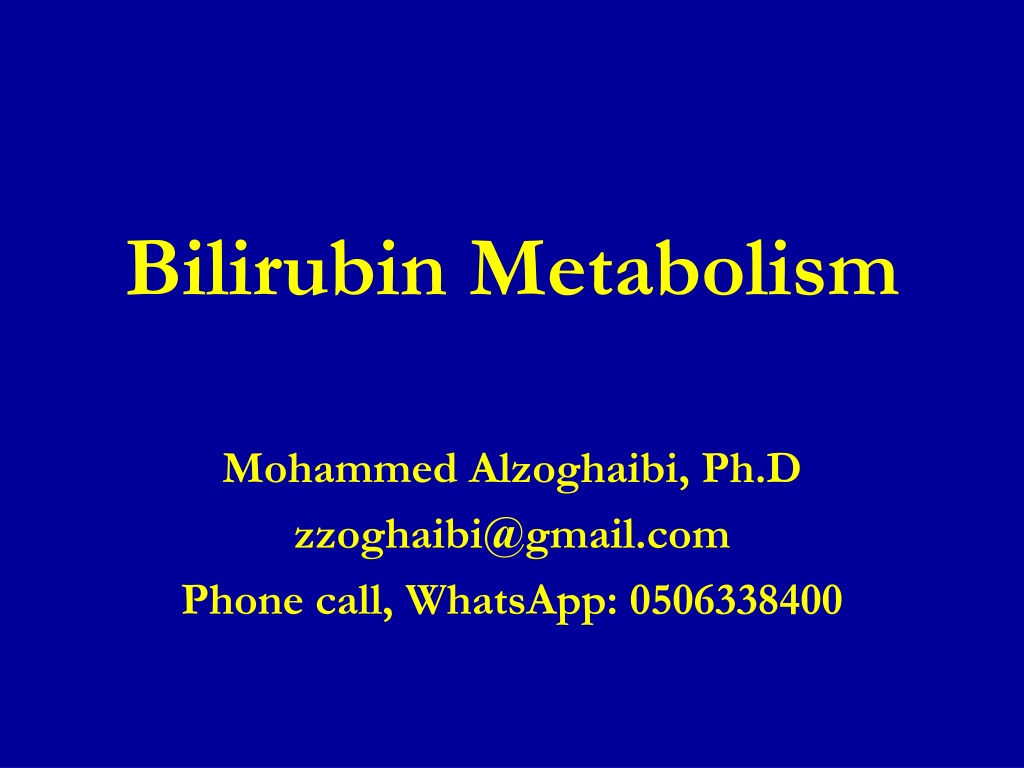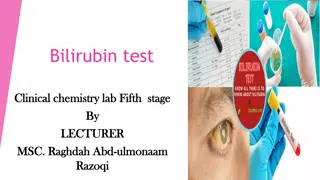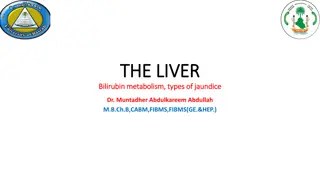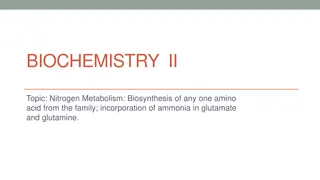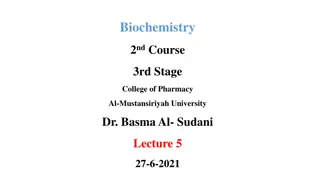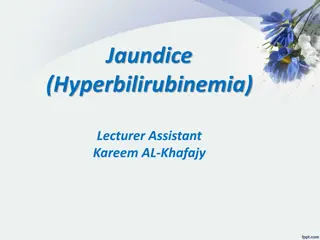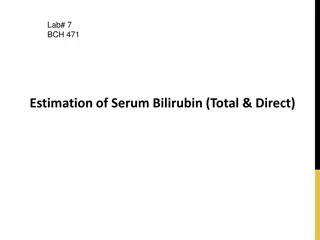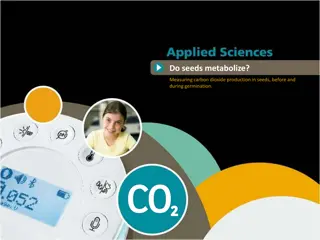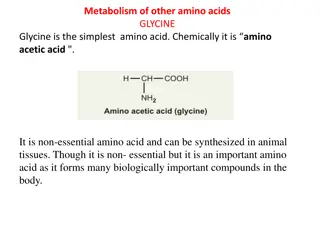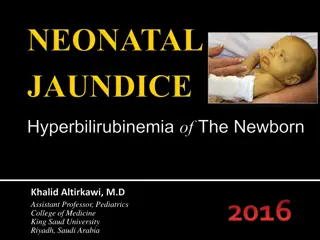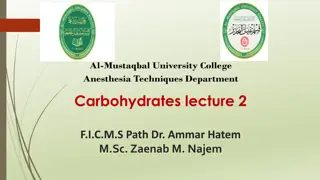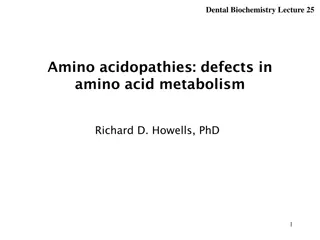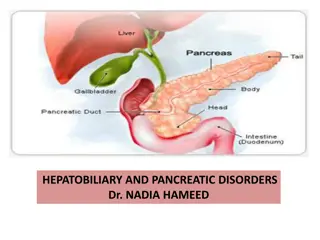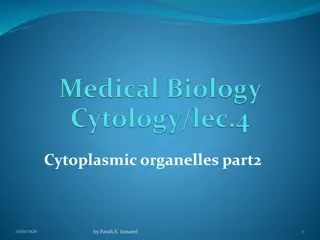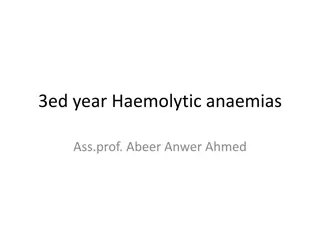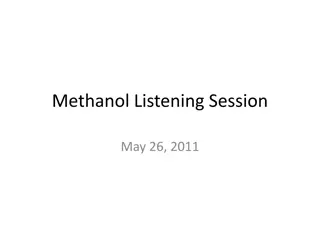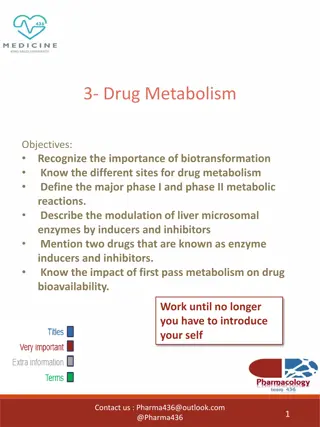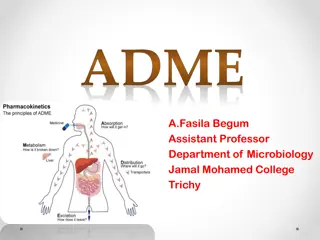Understanding Bilirubin Metabolism in Human Body
Bilirubin, a key pigment in bile, is derived from heme breakdown and plays a crucial role in the liver's detoxification process. This article explores the metabolism of bilirubin, its relationship with heme and globin, as well as its excretion steps involving enzymatic reactions and conjugation in hepatocytes. The structure of hemoglobin and porphyrin metabolism are also discussed, shedding light on the intricate biochemical processes in the human body.
Download Presentation

Please find below an Image/Link to download the presentation.
The content on the website is provided AS IS for your information and personal use only. It may not be sold, licensed, or shared on other websites without obtaining consent from the author. Download presentation by click this link. If you encounter any issues during the download, it is possible that the publisher has removed the file from their server.
E N D
Presentation Transcript
Bilirubin Metabolism Mohammed Alzoghaibi, Ph.D zzoghaibi@gmail.com Phone call, WhatsApp: 0506338400
Bilirubin Bilirubin: is the end product of heme degradation derived from breakdown senescent (aging) erythrocytes by mononuclear phagocytes system specially in the spleen, liver and bone marrow. The major pigment present in bile is the orange compound bilirubin. It is highly soluble in all cell membranes (hydrophobic) and is also very toxic. Therefore, its excretion in the bile is one of the very important functions of the liver.
Porphyrin Metabolism Porphyrins are cyclic compounds that readily bind metal ions- usually Fe2+or Fe+3which can carry O2. Porphyrins are heterocyclic macrocycles composed of four modified pyrrole (a colorless, toxic, liquid, five-membered ring compound, C4H5N) subunits interconnected at their carbon atoms via methine bridges (=CH-). The most prevalent porphyrin in the human is heme, which consists of one ferrous (Fe2+) iron ion coordinated in the center of tetrapyrrole ring of protoporphyrin IX. The most prevalent porphyrin in the human is heme
Structure of Hemoglobin Structure of Hemoglobin showing the polypeptides backbone that are composed of four subunits: 2 and 2 subunits (chain). Every subunit is consisted of one ferrous (Fe2+) iron ion coordinated in the center porphyrin compound. Each chain is complexed with a heme group shown as a green beaded structure.
Bilirubin Is the Major Component of Bile Pigments, Steps of Excretion: 1. Hemoglobin is first dissociated into heme and globin. 2. In the presence of NADPH and O2, the Heme oxygenase enzyme hydroxylates Heme, with a concomitant oxidation of ferrus Fe2+iron to ferric Fe+3, and converts it into Biliverdin. 3. Biliverdin is then reduced or converted into bilirubin by biliverdin reductase enzyme. Bilirubin is transported in blood bound to albumin forming a water soluble compound called hemobilirubin (unconjugated bilirubin, free bilirubin) which is rapidly transported to hepatocytes for further metabolism (even when bound to albumin, it s called free bilirubin).
Bilirubin Is the Major Component of Bile Pigments, Steps of Excretion (cont.): 4. The liver removes bilirubin from the circulation rapidly, mediated by a carrier protein (receptor), and conjugates most of it with glucuronic acid and only 10% with sulfate. This reaction is catalyzed by the enzyme glucuronyl transferase in the smooth endoplasmic reticulum to have conjugated bilirubin, which is more water soluble than bilirubin. 5. The bilirubin-glucuronide (conjugated bilirubin) is secreted into the bile canaliculi through an active carrier-mediated process. Note: the unconjugated bilirubin is normally not secreted.
Bilirubin Is the Major Component of Bile Pigments, Steps of Excretion (cont.): 6. In the small intestine, bilirubin glucuronide is poorly absorbed. In the gut, however, bacteria deconjugate it back to bilirubin, and convert it to the highly soluble colorless compound called Urobilinogen. 7. Only 20% of Urobilinogen can be absorbed by the small intestine (this represents the enterohepatic circulation of bile pigments). 70% of the Urobilinogen can be oxidized in the large intestine to Stercobilin (by bacteria). Urobilinogen is excreted in either urine (where it is converted to yellow Urobilin in the urine, after exposure to air in the urine) or fesses (after it is converted to Stercobilin which is responsible for the brown color of fesses).
Bilirubin Is the Major Component of Bile Pigments (cont.) Fate of the bilirubin-glucuronide (conjugated bilirubin) after they leave the hepatocyes (liver): A small portion of the conjugated bilirubin returns to the plasma either directly into the liver sinusoids or indirectly by absorption into the blood from the bile ducts or lymphatics. This represents 10% only). This causes a small portion of the bilirubin in the extracellular fluid always to be of the conjugated type rather than of the free type. These conjugated bilirubin that escaped into the blood, they bind less tightly to albumin & are excreted readily in the urine. Small amount of bilirubin glucuronide (20%) is de-conjugated (and converted to Urobilinogen) and absorbed by the small intestine into the portal blood to the liver where it is extracted by the liver cells and is conjugated again and excreted in the bile (enterohepatic circulation of bile pigments). However, 5% of the reabsorbed Urobilinogen is excreted by the kidneys into the urine.
Summary of Bilirubin Formation and Excretion
Bilirubin Bilirubin is the end product of heme degredation derived from breakdown senescent erythrocytes by mononuclear phagocytes system specially in the spleen, liver and bone marrow Conjugated Unconjugated Insoluble in water Tightly complex to albumin Not filtered through renal glomeruli, is not excreted in urine Toxic substance The chief form of bilirubin in the blood (represents the normal bilirubin in the blood; 0.5 mg/dl of plasma) Water soluble Loosely bound to albumin Filtered through renal glomeruli and excreted in urine Non-toxic Present in low concentration in the blood
Bilirubin Normal serum bilirubin is 0.3-1.2 mg/dl of blood. The rate of bilirubin production is equal to the rates of hepatic uptake, conjugation, and biliary excretion. Jaundice becomes evident when the serum bilirubin levels rise above 2.0-2.5 mg/dl; levels as high as 30 to 40 mg/dl can occur with severe disease. Main causes of Jaundice: 1. Excessive production of bilirubin 2. hepatocyte uptake 3. Impaired conjugation 4. hepatocyte excretion of bilirubin glucuronides 5. Impaired bile flow (obstruction of bile duct)
Causes and Pathogenesis of Jaundice
Learning Objectives Definition of Jaundice The normal plasma concentration of total bilirubin Classification of jaundice Prehepatic (hemolytic) jaundice Hepatic (hepatocellular) jaundice Poshepatic jaundice
Jaundice It is the yellow coloration of the skin, sclera, mucous membranes and deep tissues. The usual cause is large quantities of bilirubin in the ECF, either free or conjugated bilirubin. The normal plasma concentration of total bilirubin is 0.3-1.2 mg/dl of blood.
Jaundice (cont.) However, in certain abnormal conditions this can rise up to 40 mg/dl of blood. But the skin usually begins to appear jaundiced when the concentration of total bilirubin in the plasma is greater than 2 - 2.5 mg/dl of blood. Bilirubin level from 0.5 to 2 mg/dl is called subclinical jaundice.
Classification of jaundice I. II. Hepatic (hepatocellular) jaundice III. Post-hepatic jaundice Pre-hepatic (hemolytic) jaundice
I. Pre-hepatic (hemolytic) jaundice In hemolytic jaundice, the excretory function of the liver is not impaired. It results from excess production of bilirubin (beyond the liver s ability to conjugate it) following hemolysis of erythrocytes (RBCs). Excess RBC lysis is due to: Autoimmune disease Hemolytic disease of the newborn Rh- or ABO- incompatibility Structurally abnormal RBCs (Sickle cell disease) Breakdown of extravasated blood
I. Pre-hepatic (hemolytic) jaundice (cont.) Therefore, the plasma concentrations of free bilirubin rises to levels much above normal but it is not filtered through the kidney, because they are unconjugated bilirubin. The urine is free from bilirubin. The stools appear darker than the normal color due to excessive stercobilin formation.
II. Hepatic (hepatocellular) jaundice
II. Hepatic (hepatocellular) jaundice Hyper-bilirubinemia (increased levels of bilirubin in the blood) may be due to: Impaired uptake of bilirubin into hepatic cells. Disturbed intra cellular protein binding or conjugation. Disturbed active secretion of bilirubin into bile canaliculi. The main causes of Hepatic jaundice are: Damage of liver cells: e.g., viral hepatitis, drugs, chemical, alcohol, or toxins. Genetic errors in bilirubin metabolism. Genetic errors in specific proteins. Autoimmune hepatitis.
II. Hepatic (hepatocellular) jaundice The diseased liver cells are unable to take all the unconjugated bilirubin formed, increasing its concentration in the blood. Also, there is intrahepatic biliary duct obstruction that leads to regurgitation of conjugated bilirubin to blood (swelling of cells and edema due to inflammation cause mechanical obstruction of intrahepatic biliary tree). Both types of bilirubin (conjugated & unconjugated) are present in blood in high concentration.
II. Hepatic (hepatocellular) jaundice (cont.) Clinical Features: Stools appear pale grayish in color due to deficiency of Stercobilin. Urine appears dark brown due to filtration of excess conjugated bilirubin through the kidney ???? (probably by rupture of the congested bile canaliculi and direct emptying of the bile into the lymph leaving the liver). In this case, hyper-bilirubinemia is usually accompanied by other abnormalities in biochemical markers of liver function such as: Alanine amine transferase (ALT), Aspartate amine transferase (AST), alkaline phosphatase (ALP) and Gamma-glutamyltransferase (GGT).
II. Hepatic (hepatocellular) jaundice (cont.) Clinical Features: By looking at the ratio between these different liver enzymes, we can distinguish the causes of jaundice whether it is from biliary (cholestatic) or liver (hepatic). The main diagnostic tip is in the biliary obstruction: the ALT goes up and down (pulsatile increase) and the bilirubin concentration in the blood is high. But in hepatic jaundice, ALT increase for along period of time (months). shows persistent
III. Post-hepatic (Obstructive) jaundice
III. Post-hepatic jaundice Caused by an obstruction of the biliary tree: 1. Intra-hepatic bile duct obstruction e.g.,: Drugs. Primary biliary cirrhosis. Cholangitis. 2. Extra-hepatic bile duct obstruction e.g.,: Gallstones. Cancer at the head of pancreas.
Post-hepatic jaundice The rate of bilirubin formation is normal. bilirubin enters the liver cells and become conjugated in the usual way. The conjugated bilirubin formed simply can not pass into small intestine and it returns back into blood, probably by rupture of the congested bile canaliculi and direct emptying of the bile into the lymph leaving the liver. Most of the bilirubin in the plasma becomes the conjugated type rather than the unconjugated type. In this type of jaundice, conjugated bilirubin is filtered through the kidney and appears in urine giving it dark brown color. Urine is free from urobilinogen. Stools are clay color due to absence of stercobilin.
Liver Secretion of Cholesterol and Gallstone Formation Under abnormal conditions, the cholesterol may precipitate in the gallbladder, resulting in the formation of cholesterol gallstones. The amount of cholesterol in the bile is determined partly by the quantity of fat that the person eats, because liver cells synthesize cholesterol as one of the products of fat metabolism in the body. For this reason, people on a high-fat diet over a period of years are prone to the development of gallstones. Inflammation of the gallbladder epithelium, often resulting from low-grade chronic infection, may also change the absorptive characteristics of the gallbladder mucosa, sometimes allowing excessive absorption of water and bile salts but leaving behind the cholesterol in the bladder, and then progressing to large gallstones.
Liver Secretion of Cholesterol and Gallstone Formation
